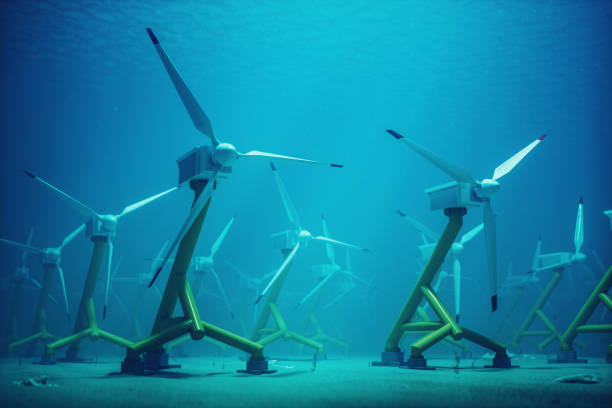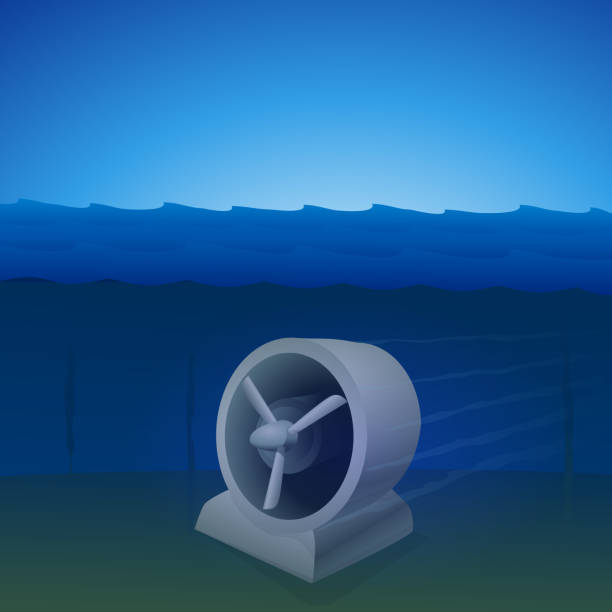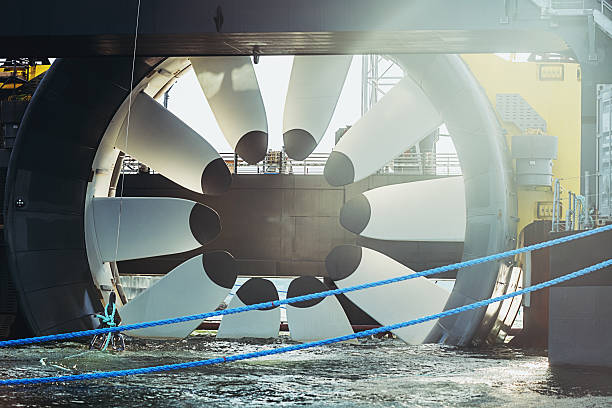Tidal power could become a vital portion of the UK’s energy mix and help provide energy security if given appropriate government priority and backing, according to experts. Earlier this month the Environmental Audit Committee (EAC), a group of cross-party MPs, published a report into the government’s 2022 British Energy Security Strategy following on from collection of evidence from experts and stakeholders in the country’s energy sector. While the EAC was praiseful of the government for putting together an energy security strategy swiftly following the Russian invasion of Ukraine, it also said that its lack of attention on tidal power was a hole in the strategy. It challenged the government to include targets for electricity generation via tidal energy sources in its upcoming refresh of the UK net zero policy. Unlike other forms of renewable energy, tidal power is predictable, making it a more reliable source of power for the national grid. There are three types of tidal energy: tidal streams, which extract energy from moving masses of water; tidal barrages, akin to dams across rivers but with turbines; and tidal lagoons, which are almost a combination of the two, with a wall around a body of water affixed with turbines to capture the energy from water moving in and out with the tides. All three forms of tidal energy are relatively expensive currently, but use technology that is already well-established and understood. Implementation of more tidal energy facilities will see the prices go down as economies of scale kick in. Energy & Climate Intelligence Unit head of analysis Simon Cran-McGreehin told NCE that setting a target for tidal energy generation in the UK is crucial for wider deployment of these technologies. “A target is very important at a high level,” he said. “It tells the industry and the world that the government and the country are serious about it.” To back up the targets there has to be a financing mechanism, Cran-McGreehin stressed. This is in place in the form of Contracts for Difference (CfD), the government’s method for providing financial support to low-carbon energy electricity generation projects. CfDs incentivise investment in renewable energy by providing developers with high upfront costs and long lifetimes with direct protection from volatile wholesale prices, in turn protecting consumers from paying increased support costs when electricity prices are high.

The Winners of the Fourth Round of CfD Was Announced in July 2022.
and for the first time it included tidal energy projects. There were four tidal stream projects among the winners, with a total expected capacity of 40.82MW, and Cran-McGreehin said this is a “very good start for tidal”. With CfD awards now expected to happen annually, he hopes that the government will afford bigger pots for tidal projects to bid into each round. “It would give [tidal energy] price stability while their costs remain comparatively high, and would help to cover those extra costs above market costs,” he said. If this were to happen, tidal energy costs could follow in the footsteps of offshore wind and gradually see the costs fall until they become neutral, according to Cran-McGreehin. “Building supply chains, infrastructure, general coordination between industry and government, these things are very helpful,” he said. “With offshore wind having been so successful, we now have a lot of the infrastructure – whether that be physical or institutional – that can quite easily be transferred and applied to other offshore technologies, including obviously tidal.” He continued: “Tidal is a fairly new technology for the UK, but the things we need to deploy it are not so new. It’s a lot of familiar approaches that we can apply, so it wouldn’t really be starting from scratch.” According to the Department of Business, Energy and Industrial Strategy’s Renewable Energy Planning Database there are currently four tidal energy sources in the UK creating a mere 10.5MW of power. However, there are a further 14 schemes currently in various stages of planning, most of them being under 100MW in expected capacity. If all of these schemes are constructed, it will bring the total energy generated from tidal sources to 1.07GW although there is considerable doubt over the biggest one – the 320MW Swansea Bay tidal lagoon – which has seen its planning permission lapse. Cran-McGreehin believes that this is just the beginning, with smaller projects being unrolled first to build confidence in the sector. “Tidal doesn’t always have to be a big bang project,” he said. “There’s definitely merit to starting at smaller scales to build up supply chains and expertise and to learn any lessons around current impacts and unintended consequences before the big ones.” The Offshore Renewable Energy Catapult – a company that helps take offshore renewable projects from concept to fruition – is also counting on increased economies of scale to help it deploy more and more tidal stream projects. In its recent report Cost Reduction Pathway of Tidal Stream Energy in the UK and France, it asserts that the 877MW of tidal stream energy could be deployed in the UK by 2035. It also believes that the UK is the “most attractive global market for tidal stream energy” and has the potential to reach over 10GW in the long-term.

Commenting on Those Targets, European Marine Energy Centre Technical Manager.
Caroline Lourie said: “However, to drive down costs so that tidal energy is competitive with other renewables, a huge ramp up of installed capacity will be needed over the next decade. For this to happen, we need long-term policy support and continued ring-fenced funding.” The CfDs will function to help grow the size of the projects and bring costs down. Compared to other renewable energy schemes, the tidal schemes awarded funds through CfD in 2022 have a much higher strike price – the fixed price at which the owner can buy or sell the energy. This will drop if confidence in the technology is shown. “They’re very small scale projects, so they’ve got low economies of scale and industry, so the cost will be higher – but also the overall cost to consumers will be tiny because they are generating a comparatively small amount of power each year,” Cran-McGreehin explained. “In the next round of CfD I would expect there will be more tidal projects that are slightly larger and at a lower price because they’ve managed to reduce that cost through learning and economies of scale from this first round of projects.

“It’s all an iterative process; we saw the same with offshore wind when it cam in originally at Higher prices.”
Even with the potential for tidal energy sources to increase, there is also the matter of connecting them to the grid. National Grid is currently working on a holistic network design to ensure new energy sources are efficiently connected, Cran-McGreehin explained. “Its holistic network design would guide upgrades in a coordinated and flexible manner,” he said. “Tidal power would be considered within this framework – and some of the likely tidal power locations, such as south west England and north east Scotland, are already the subject of planned upgrades for renewables, so extra capacity for tidal power could well be incremental extras as opposed to a new ask.”


Recent Comments